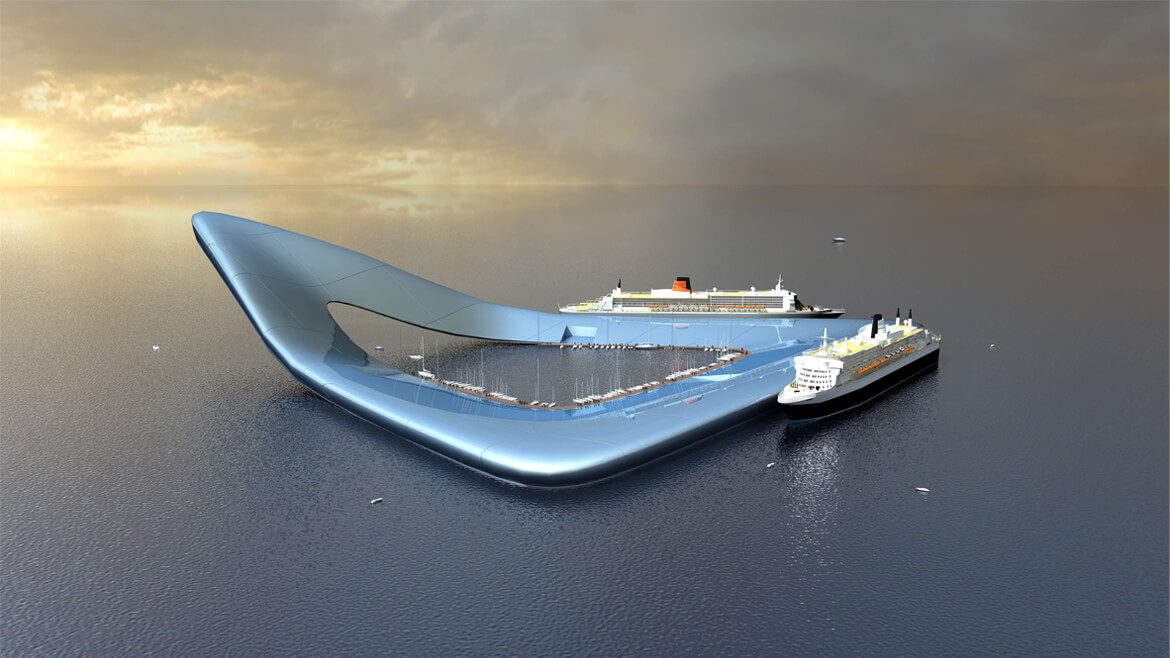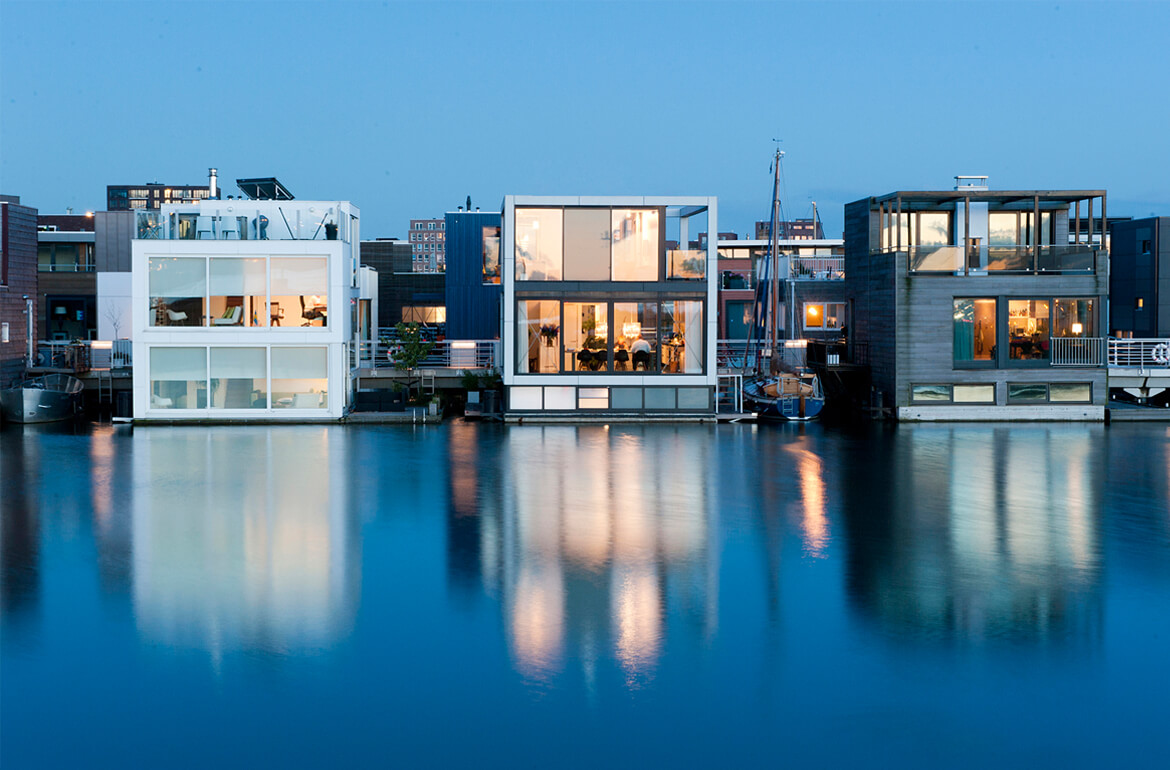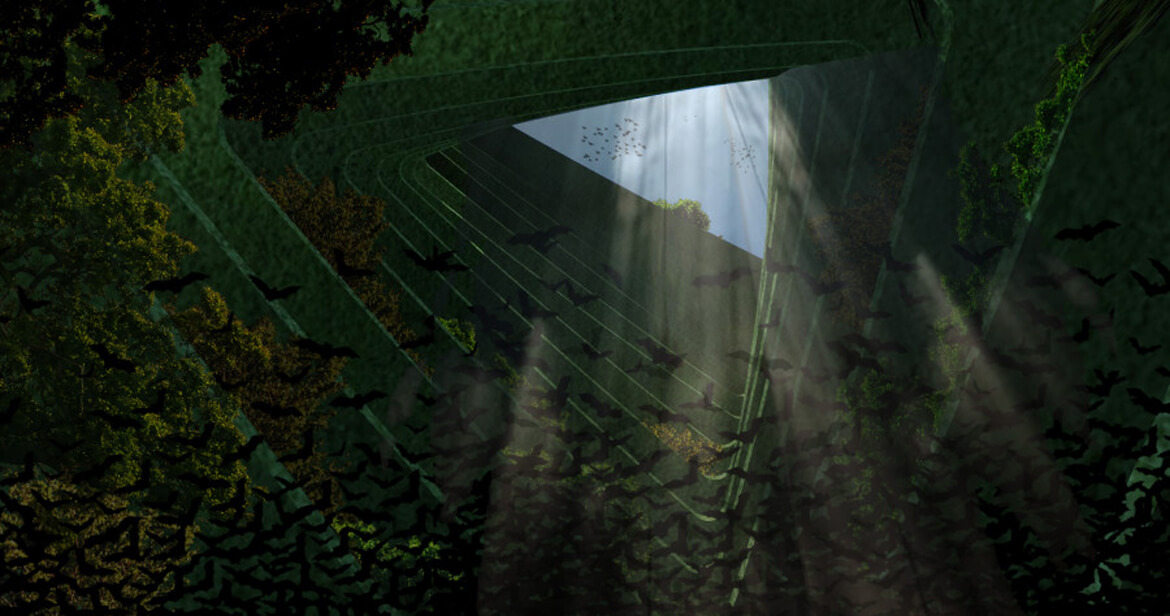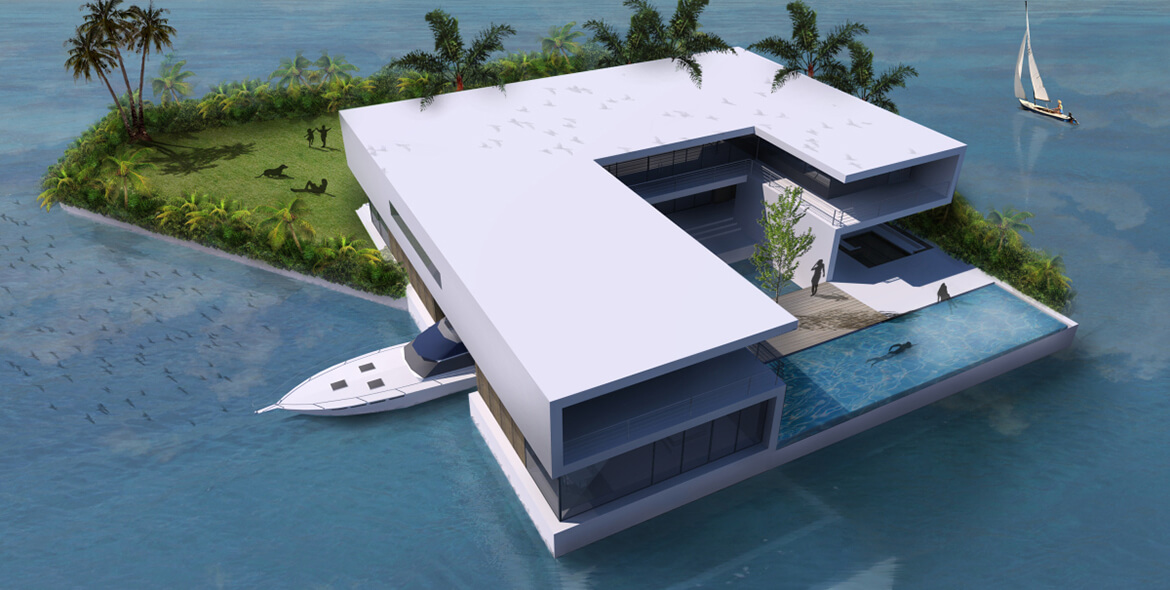Portrait: Waterstudio.nl, The Netherlands



Archi-News, February 2015
Facing the city planning and climate changing challenges, the Dutch office Waterstudio.nl chooses to work principally towards flexible strategies and large scale floating architecture projects proposing sustainable solutions.
In the Netherlands, one quarter of the country being under sea level, the architects are considering the ways to rethink the built environment. Koen Olthuis (*1971) is one of them. Founder of Waterstudio, he studied architecture and industrial design at the Delft Technology University. As per his words, we treat our cities as if they were static and we don’t stop erecting fixed urban elements, which after 50 years become obsolete and useless. But the to-morrow’s city is dynamic, hybrid, flexible and environment friendly, a moving town, which reinvents itself constantly. The architect’s work is more precise in order to especially respond to the pressing needs of climatic changes. Koen Olthuis proposes to live on the water, with the water. The first town created in this spirit is under construction between The Hague and Rotterdam. Called « The New Water », this 1200 house urban development takes place in the polder zone, intentionally filled with water after a few centuries of artificial draining.
Strict rules limit the volume authorized above sea level. This constraint gives life to a rather sophisticated design and to interesting spatial solutions, particularly a naturally lighted basement, large glass surfaces, parts with wood and a white Corian® curved frame running along the façade. First one of the 6 buildings foreseen in this project, Citadel is also, with its 60 luxury apartments, the first floating building in Europe. Easy to reach from the side by a floating road, the building is composed of 180 modular elements, placed on concrete foundations. The norms are identical to those of a house on dry land. Another element of the New Water project’s first part: the Waterfront villa has a concrete base with a boathouse and a swimming pool. Three U-shaped volumes enable to optimize the viewpoints at each level. Corian® is used as the main covering material.
Waterstudio develops a revolutionary concept for the cruise ships terminal. A sculptural triangular floating construction (700 x 700 m) situated outside the bank, disposes of more than 160 000sqm of conference halls, cinemas, shopping areas, spas, restaurants, hotels, etc. The triangular ring raises at one place to create a smaller interior harbour. Covered with aluminium panels and partly with photovoltaic cells, the structure anchors itself to the seabed by cables with shock absorbers, enabling a vertical flexibility, whilst ensuring horizontal stability. Modern, light and transparent, the De Hoef villa shows in a concrete way that floating architecture has now reached the same level as its land counterpart. Realized with a steel frame, the construction is an amphibian structure, floating on water but surrounded by land on three sides. The choice of this type of structure results from the fact that « normal » houses are not allowed in this peat landscape.
With the project See Tree, Waterstudio proposes a new concept for the high-density urban green points. With many layers of trees, this floating structure, unattainable for man, uses the petrol offshore platforms’ technology. It would be the first 100% floating object designed and built for flora and fauna.
At the other end of the world, Koen Olthuis undertakes a huge project: design a floating town in the Maldives. The masterplan proposes a solution to the dramatic situation created by the rising sea level. These floating developments, especially, have a real positive impact on the poor communities living near the coast. The architect reminds that the most exposed cities are Mumbai, Dhaka and Calcutta because of their huge populations threatened by the water level increase. In these cities, millions of people live in dense slums along the water and are vulnerable to floods especially during the rainy season. “With the City Apps, based on standard maritime containers, we want to use the technical knowledge coming from our floating projects for the wealthy people.” They can be compared to Smartphone with applications adapted to different needs, such as a special programme for slums. In view of their flexibility and small size, the City Apps use the space available on water and are very convenient to be used as residences or schools, for instance.
The objective is to reach 10 000 containers in 5 years, rented in the whole world. “The importance given to slums has opened new opportunities and has put me in touch with many interesting and influential people who understand the necessity for the architects to use their influence and creativity to change the lives of millions of human beings, underlines also Koen Olthuis”.
His approach to improve the coastal towns throughout the world with these floating urban components is a real challenge. « It is just as if we had discovered a small part of the water potential to make the cities more resilient, sure and flexible. I believe that our projects and those of many architects, who use the floating technology as a tool, will open new norms for the cities ».











 According to Waterstudio, Sea Tree would be built using the “latest offshore technology,” similar to that used in building oil storage towers in the open ocean. But instead of housing oil, the towers would play home to plant and animal species, working to reduce CO2 emissions along the way.
According to Waterstudio, Sea Tree would be built using the “latest offshore technology,” similar to that used in building oil storage towers in the open ocean. But instead of housing oil, the towers would play home to plant and animal species, working to reduce CO2 emissions along the way.








